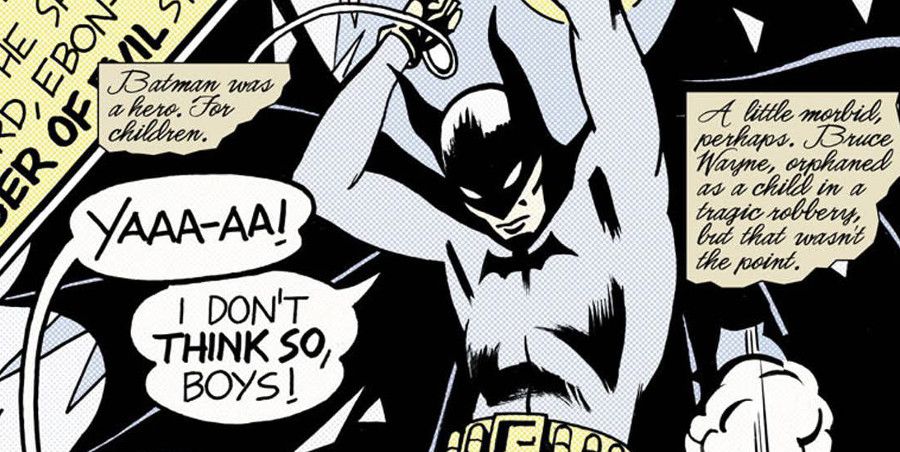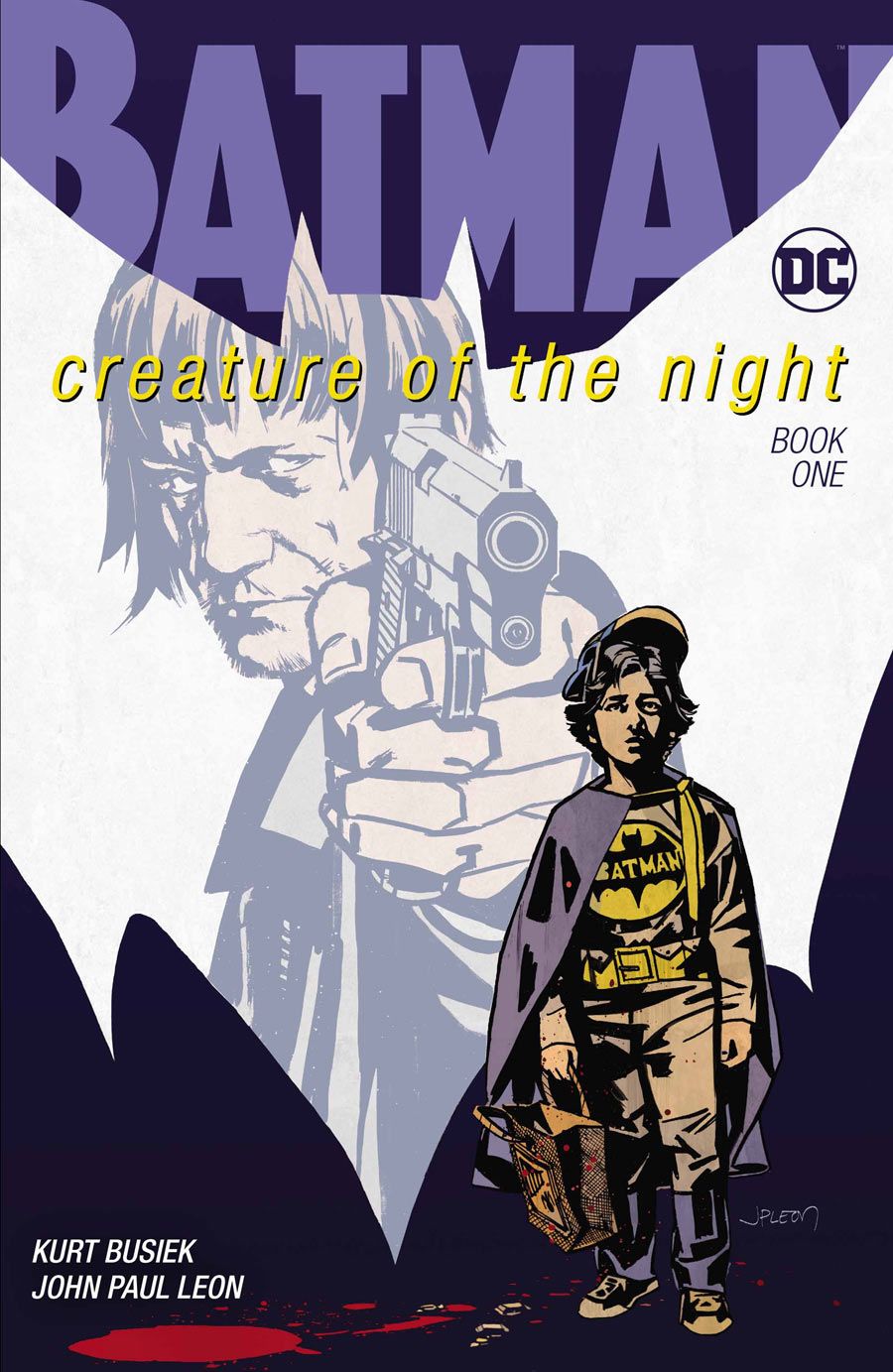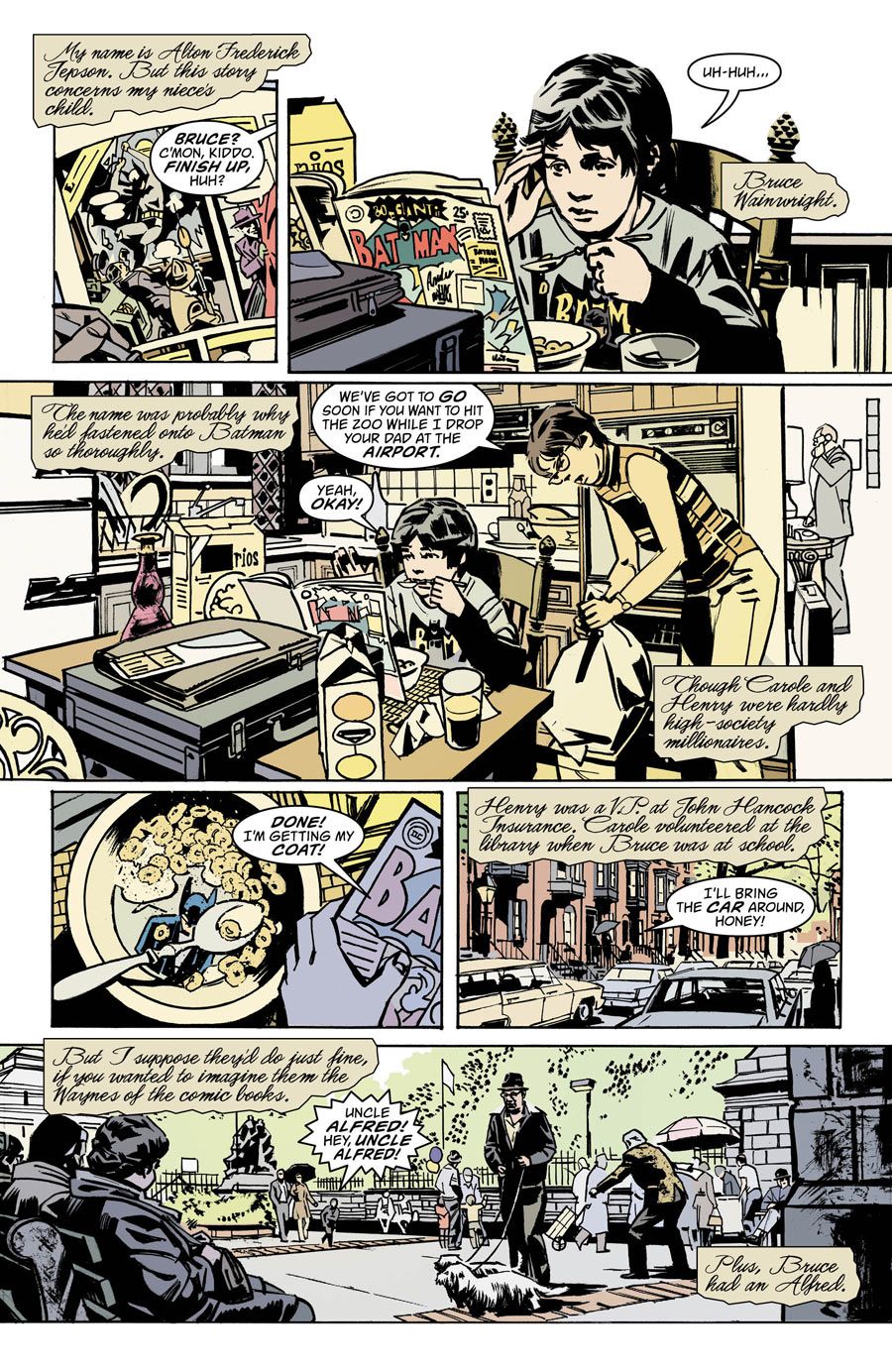Nearly every kid pretends to be a superhero at some point, and many of them imagine themselves as Batman. But if you were really the Dark Knight, your life wouldn't be a fantasy.
That's part of the concept behind DC Comics' Batman: Creature of the Night, a new prestige format miniseries starting this week from the creative team of writer Kurt Busiek and artist John Paul Leon. It's a spiritual sequel to Busiek and Stuart Immonen's beloved Superman: Secret Identity which in 2004 imagined a "real" teen named Clark Kent, who one day got the superpowers of the comic book hero whose name he shared. This new series imagines the life of Bruce Wainwright, a Boston 8-year-old and Batman comic-reading everykid -- until one Halloween in 1968, when his parents are killed at gunpoint.
PREVIEW: Batman: Creature of the Night #1
CBR spoke to both Busiek and Leon about the series, and the team opened up about their inspirations for placing a Batman story not just in the real world but in a period setting, what makes Batman stories work emotionally and why the traumatic take on comic book heroes couldn't work with other members of the DC pantheon.
CBR: I wanted to start by asking about Batman in general. I'm going to murder the specific quote, but I remember reading that the late Marvel editor Mark Gruenwald had spoken about the DC pantheon of heroes as being endlessly reinvent-able. You could do Adam West as Batman or the Tim Burton movies or what have you, and there was always another lens that you could view them through. Is that part of how a project like this begins its conception?
Kurt Busiek: I don't think so. Mark had a lot of really interesting ideas about the characters, and I think he's right that Batman is a very versatile character. But what attracts me to these characters like Superman and Batman, and you could do it with Wonder Woman, is that there's a really strong emotional idea at their core that you can then translate. You can do Batman for kids or do the Adam West Batman or the Frank Miller Batman, but they're not really exploring the same emotional core.
Superman is very strongly a metaphor for adolescence. Clark Kent is the kid. Superman is the adult. Changing into the costume is like his voice cracking. The adult is respected and women want him. The kid version is a nebbish character. You always see that. Batman doesn't have that going on, but he does have this really strong sense of a child reacting to the unfairness of the world by going, "I'm going to make things fair." That's not an idea you see in the Adam West Batman, but it's that idea that fuels Batman: Creature of the Night. This is a child's emotional dilemma turned into mythology -- turned into an emotional crusade against crime. It's how our characters in a "realer" world deal with that emotional core. That's what drives the series much in the same way that Superman: Secret Identity is about a different kind of emotional core as the idea of the secret self plays out with the character.
I think you could probably do this sort of thing with a bunch of characters. But I don't know if you could do it with someone like The Flash, because I don't think there's a strong core emotional beat to that character. Flash is pretty cerebral. He's a police scientist. He gets superpowers. He does police things with his powers. They're classic puzzle stories. But if you wanted to do a story about the central emotional drive of the Flash, you'd have to invent it.
John, your sense of visuals are so distinct and unique to you, but I think there's also a verisimilitude that makes you an obvious fit for a project set "in the real world." When I see the early pages, it seems there's a mix between that reality and then images that are more abstract or pure id. What is it like for you to find the line between those two ends?
John Paul Leon: That's the most interesting part of this for me, that balance between Bruce Wayne being real but also being very abstracted in a way. This is almost the ideal project for me because I think that's a central idea to the story -- the idea of taking the world we live in, or the period we're in, and subjecting a very fantastical superhero motivation and character into it. How do you sell that and make it believable without making it slavishly realistic? You've got to find a way to do it where it still has a sort of graphic integrity. It's not bending over backwards trying to be photographs on paper. It's distilled. For me, that's the most interesting part of working on the project.
You're very selective with your projects, but you've done Batman work before and very recently. Is there a core visual appeal to the character that brings you back?
Busiek: It's the cape!
Leon: No, it's the ears. [Laughter] It's the environment more than anything. That world Batman live in appeals to me. The character can go very simplified or very detailed. I tend to lean towards simplification, but the world that he inhabits -- a very urban, city kind of environment -- is attractive to me.
It's a period piece too in that sense, and the story starts with a kid reading Batman comics which will immediately resonate with a lot of the readers out there. Did you draw things autobiographically to build this story, or is it more the universal appeal?
Busiek: It's more about the character. I didn't realize that as a period piece, the Bruce of our story is my age. He's in 1968 when he start. Bruce is 8. And it's at Halloween in 1968, which means I was 8 at that year and in that month. I grew up in the Boston suburbs, but I didn't grow up on Beacon Hill. I didn't dress up as Batman for Halloween, and my parents were never shot. So there are probably elements in there that come from me, but I'm translating them through thinking of the idea of Batman and thinking about this emotional center of the character. I'm trying to build characters that will work from that core rather than trying to build it out from me. I'm not Bruce Wayne. There's probably more of me in the Clark Kent of Secret Identity than there is in Bruce Wainwright, because that kid's got a miserable life. He wears nice clothes and makes a lot of money, but he's working through trauma.
The reason we made it a period piece at the beginning was because we knew he was going to get older in this story. In Superman: Secret Identity, we started it out at a time that you could be given a Superman Archives as a Christmas present. So that made it the late '80s. From that point, he grew up, and it was sent in the future. And I don't think Batman stories happen in the future. Batman stories happen in the present or in the past. In the future, it gets a little weird because Batman's not a science fiction idea. It's a crime/mystery/horror idea. I wanted to have room for the character to grow up and not take place in the future.
I don't know how much there is to say about this, but it's been a truly awful time in America for gun violence of late. And the Batman story is one that starts with gun violence. Some comics tackle this directly, and others downplay it as pulp. But as a Batman story in the "real world," do those issues inform how you approach the story?
Busiek: Not in this particular case. I wrote this story before [recent events] and so in the writing at least I'm reacting to the universal. In issue #1, one thing I like about the opening scene where Bruce's parents die is that we didn't sensationalize it. Bruce's experience in narration and artwork is powerful, but it's flat. The power of it is in how blunt it is.
Leon: It's a Sidney Lumet film.
Busiek: Yeah, it's narration that is very, very factual. It's delivered by somebody who is obviously very upset by these events, but he won't let you into his emotions. He's telling you the facts, and the facts by themselves are a punch in the face. The gunshots happen off panel. They're sound effects because this is about the reaction to these facts, and you want the facts to feel like facts. I didn't rationalize it this articulately as I was writing the story, but there are places where the narrative retreats only into facts and tells you things flatly because the enormity of the events is too much. You get to bring your own reaction to it. We don't want to tell you "This is how you should react." We want to tell you, "This is how Bruce reacts to it."
Batman: Creature of the Night #1 is in stores now from DC Comics. Read a full preview of the issue here.



